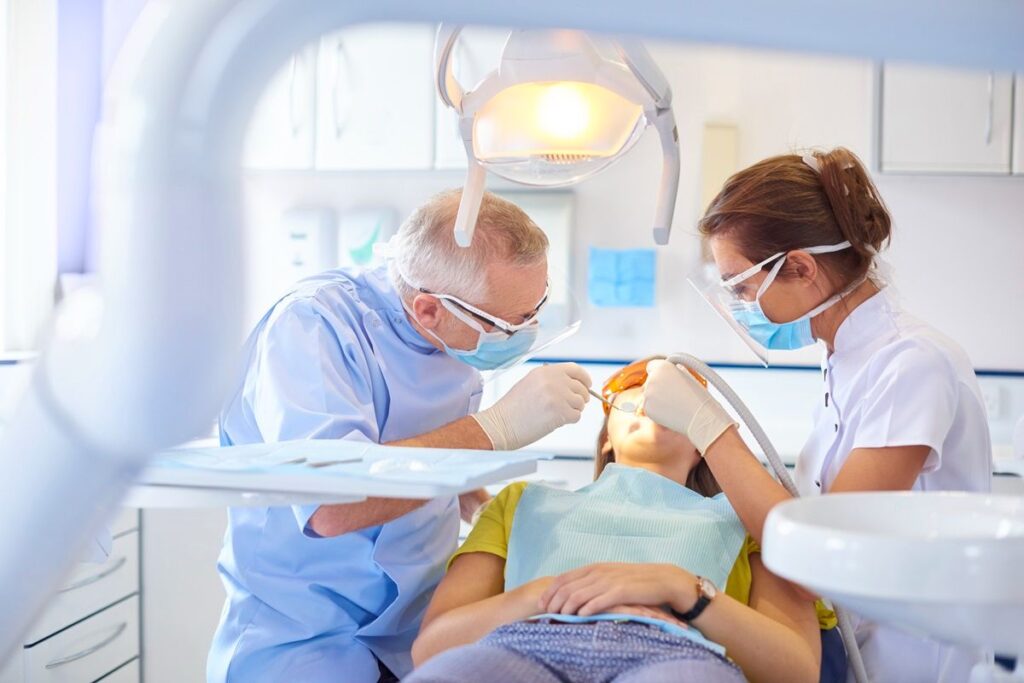Many people find going to the dentist stressful due to the sounds of dental tools, potential discomfort, and fear of pain, which can discourage them from seeking essential dental care. Fortunately, sedation dentistry in Okotoks offers a solution to these fears, resulting in a more peaceful and enjoyable dental experience.
What is Sedation Dentistry?
Sedation dentistry, commonly known as sleep dentistry, involves administering sedative medications to patients to help them relax during dental treatments. It’s a safe and effective method to alleviate anxiety and discomfort, making dental visits more comfortable for individuals who are apprehensive. Sedation dentistry is beneficial for patients who have dental phobias, have sensitive teeth, or are undergoing severe dental treatments.
Types of Sedation
Nitrous Oxide (Laughing Gas)
- Nitrous oxide is a moderate sedative delivered by a nasal mask.
- It causes exhilaration and relaxation, putting patients at ease.
- Patients can resume routine activities without feeling drowsy because the effects are temporary.
Oral Sedation
- This involves taking sedative medication orally prior to the dental treatment.
- The dosage of oral sedation ranges from mild to moderate. Patients may feel drowsy but will stay awake and
- responsive to the dentist’s instructions.
Intravenous (IV) Sedation
- IV sedation, which is administered through a vein, provides a deeper level of relaxation.
- It is frequently used for more complex procedures or for patients who suffer from severe dental anxiety.
- To ensure safety, vital signs are closely monitored throughout the procedure.
General Anesthesia
- Extensive procedures or patients with specific medical needs are reserved.
- Induces a deep sleep, leaving the patient unconscious for the duration of the appointment.
- Vital signs must be carefully monitored, and assistance with recovery is required.
What to Expect
1. Initial Consultation
A thorough consultation with the dentist in Okotoks is conducted prior to the session. The dentist goes over the patient’s medical history, current medications, and any existing health concerns during this meeting. The dentist and patient discuss the patient’s level of anxiety or fear and decide on the best type of anesthesia for the intended treatment.
2. Preparation
If the patient is undergoing oral or intravenous (IV) sedation, they may be given specific fasting instructions. This usually entails not eating or drinking for a particular period of time prior to the dental consultation to ensure the sedative is effective.
3. Administration of Sedation
- Nitrous Oxide (Laughing Gas): The patient inhales a mixture of nitrous oxide and oxygen through a mask put over the nose. The effects are often moderate and temporary.
- Oral Sedation: An hour before the surgery, the patient takes a recommended sedative pill. The dosage of this type of sedation can range from mild to moderate.
- Intravenous (IV) Sedation: A vein-administered sedative induces quicker and deeper drowsiness, often used for more intricate treatments.
4. Monitoring
The dentist near you continuously monitors the patient’s vital indicators, such as heart rate, blood pressure, and oxygen levels, throughout the treatment. This assures the patient’s safety and enables sedation level modifications if necessary.
5. Dental Treatment
The dentist begins the dental work when the patient has been suitably anesthetized. Local anesthesia may also be utilized to numb the area being treated, ensuring the patient is as comfortable as possible during the treatment.
6. Post-Treatment Monitoring
After the dental work is completed, patients are observed as they gradually awaken from the sedation. This may include assessing vital signs and ensuring the patient is stable before allowing them to leave.
7. Recovery and Aftercare
Patients may require some time for recovery before leaving the dental clinic, depending on the type of sedation utilized. It is normal for patients to have someone accompany them to the visit and drive them home after receiving more intense sedation. Following the sedation, patients are given post-treatment instructions, which may include guidelines on eating, drinking, and activities.
Sedation dentistry near you has improved many people’s dental experiences by making them more accessible and comfortable. If worry or fear has kept you from receiving dental care, talking with your dentist about sedation options could be the first step toward a healthier smile and a more relaxed you. Remember that open communication with your dental care team is essential for delivering a safe and enjoyable experience tailored to your particular needs.
Have a Stress Free Dental Experience
Cornerstone Dental Wellness understands that dental visits can be stressful and anxiety-inducing. Our caring team and skilled dentists strive to make your appointment comfortable and anxiety-free, prioritizing your oral health in a peaceful environment.
Schedule your session today!


